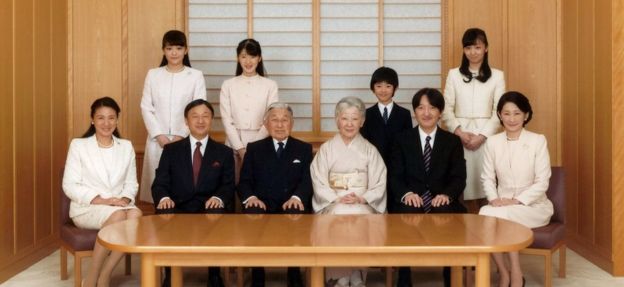
Japanese Emperor Akihito, 85, will abdicate on April 30, 2019, becoming the first Japanese monarch to do so in about two centuries. He will be succeeded by Crown Prince Naruhito, 59.
Here are some key facts about Japan's monarchy:
- Traditionalists believe Japan's imperial institution is the world's oldest hereditary monarchy. Eighth-century chronicles say the sun goddess Amaterasu Omikami bequeathed her grandson a mirror, jewels and a sword, which he gave to the first emperor, Jimmu. The chronicles give Jimmu's reign as 660 BC-585 BC, but there is doubt as to whether he ever existed.
- For most of the imperial institution's history, the emperor lacked direct political power and was primarily a symbolic and religious figure. Under the Meiji constitution, promulgated in 1889, the emperor became a constitutional monarch as well as a divine sovereign who was the focus of loyalty for his subjects.
- Japanese wartime leaders used a state Shinto religious ideology to mobilise the masses to fight World War Two in the name of a divine emperor, but Japan's post-war constitution established the separation of church and state. State Shinto was abolished. The emperor performs about 20 Shinto rituals each year as private acts, separate from his official duties.
- Emperor Akihito, born in 1933, has made efforts throughout his reign to reconcile Japan with its former colonies in Asia and to help it project an image as a peace-loving nation. He and Empress Michiko modernised the royal family, bringing it closer to ordinary people.
- Akihito's father, Hirohito, known posthumously as the Emperor Showa, was treated as a god but renounced his divine status after Japan's World War Two defeat in 1945. Under the constitution, drafted by U.S. occupation forces, the emperor became the symbol of the state and the unity of the people.
- Women may not take the throne, although historically females have acted as place-holders who could not pass the throne to their offspring. Crown Prince Naruhito has a daughter, Princess Aiko. Upon Naruhito's death the throne will pass to his younger brother, Prince Akishino, then to Akishino's son Prince Hisahito. Prince Hitachi, 83, Akihito's younger brother, is next in line.
- Akihito, who has had treatment for prostate cancer and heart surgery, said in 2016 that he feared increasing age would make it hard to carry out his duties. A year later, parliament enacted a law making his abdication possible - the first since Emperor Kokaku stepped down in 1817.(Reuters)









